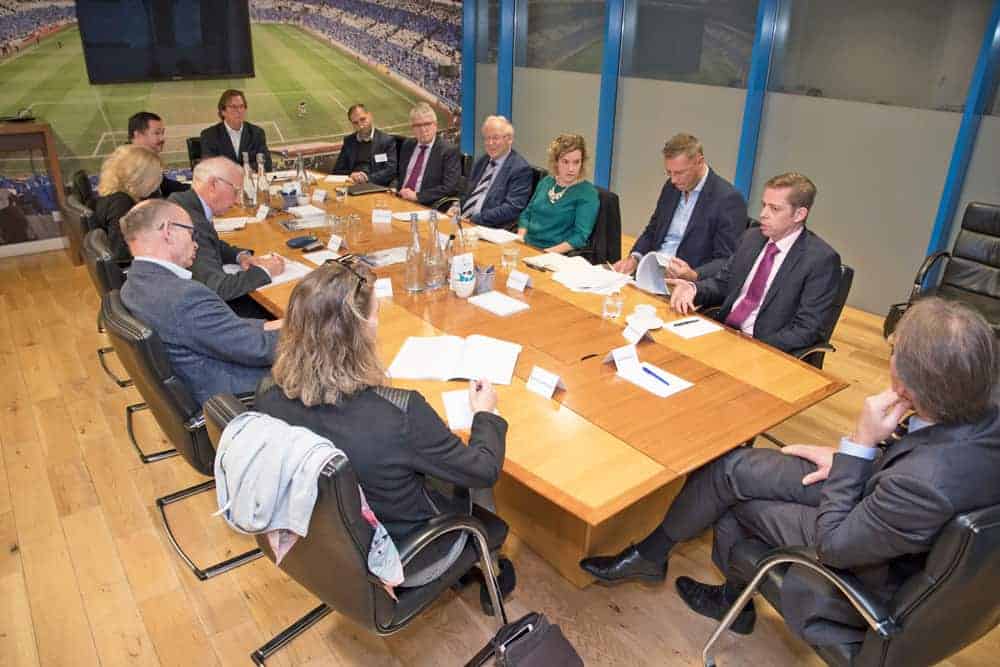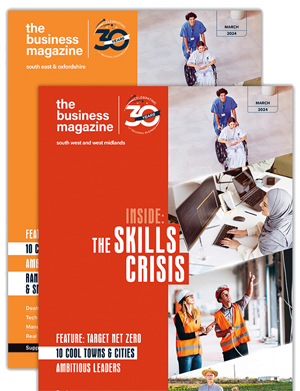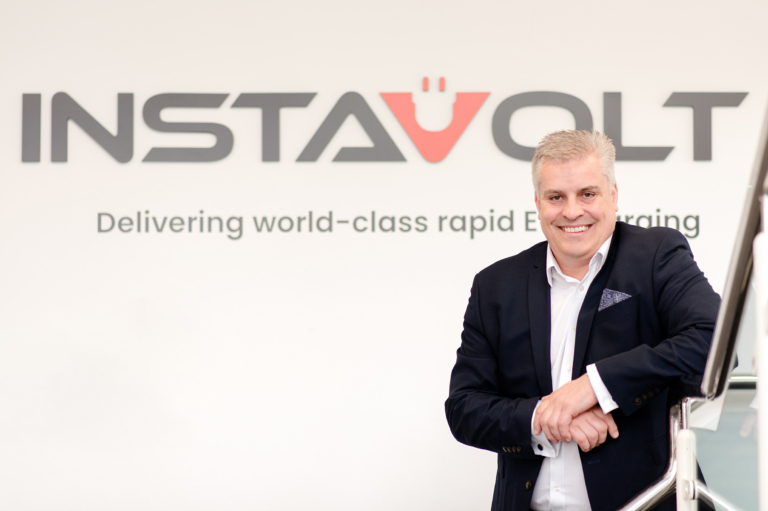The Fourfront Group Roundtable - The future of work


The Business Magazine staged this roundtable in Slough with sponsors Area Sq, office refurbishment and fit-out specialists within the Fourfront Group of leading commercial interior design companies. Invited representatives from workplace creators to commercial property experts, business park owners to company occupiers provided an interesting mix of views in discussing . . .
Technology is driving our workstyle revolution
The Internet began today’s workstyle revolution. Anytime-anywhere connectivity has provided greater freedom for individuals to live their lives, and increasingly to undertake their work. With the traditional workplace now not always in a set place, the challenge is to create ways to work enjoyably and productively within better workspaces, suggested David Murray.
Flexibility of communications will be key for everyone, and cloud technology was already enabling that workstyle shift, said Kris Wood. He also noted the app generation coming through utilising multiple digital services. “The growing trend is definitely that work is something you do, not a place you go to. Therefore you need communication tools that allow you to work from where you want to be, rather than where you feel you have to be.”
Leeson Medhurst said the future challenge for businesses would be in the appropriate use of their workplaces. ‘Agile working’ and ‘hot-desking environments’ may now be buzz-phrases, but they are becoming office reality.
Fourfront chairman Aki Stamatis spoke about creating ‘intelligent buildings’. “Technology as part of building design is now as critical as the architecture. It’s about how technology physically exists in a building. It needs to be attractive to an employer but also to their multi-generational workforce.
“What Fourfront does has changed in the past decade from fitting out buildings to understanding what workplaces really are and then creating them. For us, it has been a massive mindset change, almost revolutionary, and it will continue.”
Murray also noted how today’s skilled, digitally-enabled and often multi-generational workforce, with its demands for flexible and remote working, better work-like balance, and at-work facilities, was putting pressure to change on traditional workplaces.
. . . ironically, technology can also be a workplace barrier
Wood suggested another key employer challenge was not only providing an attractive workplace environment but also suitable technology to support the desired workstyle. Employees were now used to using compatible comms platforms in their home and social life, yet in work they were often faced with different, frequently outdated, systems. Such workplace technology could create a barrier to employee engagement, and hold back productivity.
“Businesses need to allow their employees to consume their work applications as easily as they do in their personal life, but with the right layers of security, control and compliance.”
Calvin Williams agreed that for agile working to be successful, businesses should consider upgrading their current technology.
Property consultant Charlie Nicholson mentioned workplace issues brought by BYOD and the speed of tech comm advancement. Costs of technology may have fallen in the consumer world, but for businesses introducing fresh companywide comms systems, which might outdate, the outlay could be a major barrier.
Fellow property specialist Stephen Head felt mobile and compatible tech comms was essential for modern workstyles. “In our firm, the comms lines are now so blurred that it’s almost impossible to imagine not being able to access all our systems remotely.”
Thames Valley comms infrastructure and connectivity black-spots, even in towns, were still a concern, he noted. “That’s a key driver for occupiers. It’s the first thing they ask about.”
Nicholson agreed, noting that detailed property connectivity reports were now frequently required within landlord and potential occupier discussions.
Infrastructure access used to mean road systems, said business park expert Rupert Batho, but today it involves the property’s technology. “It’s a key aspect for occupiers and one that is evolving in line with the way they aim to use the building.”
Stamatis: “Everything that today means infrastructure in a building becomes very relevant, because bringing an older building into use as a modern workplace will produce very different demands.”
Fuze’s Matthew Glock felt workplace technology and transportation access infrastructure was important, but so was the immediate workplace vicinity with potential access to shopping, bars and leisure amenities.
Is your finger on the occupancy pulse?
Intensity of space usage is forcing landlords to future-proof their premises’ infrastructure stated Batho. “Whereas 10-15 years ago standard building design used to be one person per 12 sq m, now it’s one to eight and sometimes occupiers sweat their assets even more, so that has to be factored into buildings.”
The building’s use can also determine the need for parking spaces or internal facilities because of the working week ‘occupancy pulses’ created by flexible and remote workstyles.
Glock agreed, exampling that Monday’s offices were always busy, Friday’s not so. Space usage expanded or contracted during the week due to scheduled meetings, unscheduled collaborations, video-conferencing, etc. With no structured nine to five working employer-occupiers needed to examine the efficient and effective use of workspace.
Nicholson: “For occupiers it will still come down to cost, every square foot counts. So cost-effective workplace analysis at an early stage, as carried out by 360, is vitally important.”
Head confirmed that Thames Valley office developments have typically been designed to 1:10 sq m occupancy standard but 1:8 is a growing trend. This isn’t ‘cramming people in’, merely reflecting the requirement for buildings to provide the different kinds of working environments and greater flexibiliy.
Williams agreed that ‘agile working’ – first perceived as reducing office space requirement – was now revealing itself as enlightened employers providing employees with more varied workspaces within the overall workplace environment. “Square footages have not changed dramatically, companies are merely providing more of a welcoming home environment in which to be productive.”
Head: “Agile working is now the default position. Until now, occupiers have not necessarily been using less space, just allocating their space more imaginatively.” Having embraced new working practices, occupiers are now able to better assess their actual space usage, hence the occupancy level change in newbuild design.
Medhurst revealed that the average UK office occupancy is 64% – “So why plan for any more?” He advised planning to maximum average occupancy levels rather than workforce headcount. “It’s the different space types that matter, not the space size. People need to be empowered during their work to make different activity zone choices within the workplace environment.”
Co-working, collaboration and comfort
Recently returned from a New York ‘WorkTech’ conference Stamatis highlighted the growing popularity of smaller corporate offices supported by the use of co-working spaces. “Companies take less corporate space and encourage their employees to use co-working community space – paid-for serviced environments where property is a retail experience, with refreshments and varied facilities from booths to meeting rooms.” This approach is being factored into property strategy for US corporates thinking of setting up in the UK, he added.
Wood revealed that fast-growing Fuze had followed the same property-use path when based in London, before it decided to occupy a dedicated head office space in well-connected, vibrant and much less expensive Reading. It also still uses co-working facilities in London.
Batho and Head remarked that co-working space was not a new property-use concept. Core-and-flex provision was around in the 1990s. The change today was in nature and style of use. London is a main financial centre, but now it is also the main European tech hub, growing faster than San Francisco, noted Batho.
Stamatis highlighted that major corporates are now starting to utilise co-working spaces in the same way that startups and SMEs might use them.
Head noted the workstyle change, with informality, collaboration and comfortable surroundings being crucial to the co-working experience. “We looked at Regus serviced offices but they were too ‘professional suit & tie’ for us, and the The Office Group in London who deliver a WeWork type environment promoting collaborative working and creativity suits us much better,” Wood mentioned.
Stamatis observed that the market valuation of the established Regus Offices organisation is around £2 biillion, while the WeWork valuation, just five years from formation, is about £10b. “It’s all about their workplace attractiveness, with businesses feeding off each other in a curated space.
“Where we work, where we live, and when we work is blurring, changing life dramatically. What is the meaning of work when it changes its nature physically as a space?”
Banker Sarah Dean highlighted workstyle change too. “At Handelsbanken we are very much more mobile. Ten years down the line, banking will be very different. In Sweden we already have a business model involving shared ‘meeting places’ that might be used occasionally to talk more conveniently with customers.
“As digitisation of banking becomes more popular, people won’t need to come into a branch space so often. I can envisage meeting places being out of town, for instance on a business park where parking is more convenient and traffic less of an issue for our customers, as well as the space being more cost-effective for the bank.
With customer relationships being important, bank branch offices would continue to provide face-to-face experiences and services, but less and different space might be required.
Batho: “Co-working is currently very strong in London, and growing in regional cities, but not yet in urban fringe business parks, although you will see co-working reflected as landlords, or third parties create onsite microcosms of it. Collaborative, agile and flexible working will extend over time as generation Y and Z hits the workplace.”
Will workplaces need a big badge above the door?
Murray wondered if use of co-working space might see an end to corporate branding on some workplaces.
With co-working space operating on a ‘pay-as-you-use’ basis, Dean surmised any user branding would not be likely, or certainly not permanent.
Head: “Never underestimate the big-badge value in business mentality. Businesses of a certain size will have a hub centre and will want to see their name above the door.”
Glock: “Millennials, generations X Y Z, have a different attitude to work and are not so connected with that big badge mentality nowadays.”
That might be true for employees, Head agreed, but not business owners, who nowadays could equally be young entrepreneurial millennials.
Status and hierarchy was now much less evident in modern businesses, noted Stamatis: “In many businesses today you wouldn’t know who the owner is, because they are sitting within the open space workplace as well.”
Company branding was also not so important to millennials who will have many jobs in their working lives.
“In my baby-boomer generation it was said we would have four jobs of an 11-year average. It’s estimated the app generation will have 11 jobs in four years. With most startups not lasting five years, asking them to sign a five-year lease will be an issue. Social and generational pressure is absolutely coming to bear on property, businesses and work.”
Batho: “Generations coming through will be far less corporately loyal, because corporates have proven to be far less loyal to the individual.” Such generations will also be more selective about who they work for, another change to which corporates will have to respond.
Does workplace image really matter?
Stamatis: “Yes. In Fourfront we have absolutely seen how workplace environment plays a major part in recruitment and retention.”
Wood stated that moving to stylish One Valpy in Reading not only pleased Fuze employees, but also Fuze clients who had welcomed the ‘big badge’ affirmation of an impressive premises, rather than a serviced office. “Our workplace is now an absolute showpiece for us.”
Fuze had no previous associations with Reading, said Wood, the business having started in London because clients flew into Heathrow and knew where Paddington was. Rapid growth prompted the Fuze move this year. “The more we looked at it, the Thames Valley M4 corridor and specifically Reading – as a tech hub, with lower costs, IT companies, university, talent pool, good lifestyle and easy commuting, especially with Crossrail coming – was an easy decision for us.”
“For us, who do a lot of work in Reading, that’s music to our ears,” said property consultant Head.
Nicholson agreed. “It is a growing trend with companies moving out along the M4 and M3 corridors – Maersk in Maidenhead, Time Inc to Farnborough BP. You are still seeing those ‘big badge’ moves: PepsiCo, Bayer and Thales at Reading’s Green Park, for example. A big part of the reason is to invest in a better working environment for staff retention, and winning the war for talent.”
Stamatis noted the rising boardroom role of the chief information officer – no longer “a geek on a laptop”, but a company information strategist. Technology is now important to how businesses function, and today workplace technology use often reflects a company’s culture.
Home sweet work-home
Williams said companies today were ‘investing in a home’ – staff retention, loyalty, work culture engagement, were now all key employer objectives. Employees might be keen to explore various job careers, but were also be prepared to stay and work productively if they felt ‘at home’ in their working environment. “Sometimes good mobile tech comms is not enough; people want to go to their work-home and communicate face-to-face with colleagues.”
Medhurst agreed. “People need people. Interaction is essential. Generation Z may be digitally aware, highly skilled, adaptable, the most influential in future work change, but they crave interaction with people.” Working with people, in a team was attractive; employers had to create attractive workplaces for them to come to.
Stamatis noticed that workplaces were becoming more like homes, in furnishings, décor and creature comforts. “Why tolerate bad coffee in the office when you wouldn’t at home, and yet you probably drink more coffee at work?”
The merging of work and home is more relevant for younger employees unable to afford their own home. Their ‘work-home’, with restaurant, showers, concierge laundry and booking services, might actually be more comfortable and convenient than their rented home. “Their workplace can become their social, interactive and functioning space, a major hub of their life, and there’s the message for workplace design and creation.”
Dean said London remained a massive draw for younger generations. “We have to work very hard to offer them something very special and attractive inside and outside of work, to stay in the Thames Valley.”
Glock agreed with Head: “Crossrail is a double-edged sword. Reading is not London, but I think its stands above other Thames Valley towns in creating an attractive 24/7 culture.
Dean mentioned Handelsbanken research – When you take into account use of online banking, apps, telephone support etc, these days the lion’s share of interactions do not take place face to face; nevertheless over 60% of young people still want to talk to someone in a bank when making important financial decisions. “It’s this interaction piece again, people want to see people. It can be a very difficult balancing act for businesses to create the right workspace for staff and customers.”
Batho felt the pace of workplace change and the growing tension between employees’ desired working environments and employers’ ability to provide them was being driven by significant macro issues:
- The corporate war on talent – recruitment and retention
- The work ethic of upcoming generations eg multi-jobs and various careers
- Where such employees will want to work – “They will be far more agile in a global sense, than just within the Thames Valley.”
Say ‘hello’ to the hologram
Murray asked: “What will future working life be like? In five to ten years time will we still have a working day? Will people just do work when and where they want to?
“Technology allows us to do that right now,” said Wood. Face-to-face meetings will never be replaced by video or Skype, he felt, but such technology does reduce travel time and costs, so businesses welcome it. “However, in some companies travel is a cultural thing and staff prefer to do it.”
Stamatis felt face-to-face meetings were partly a generational divide. Some staff were very used to them, preferred human interaction rather than virtual meetings, which they found uncomfortable. “But, if you grow up with such technology, then it’s fine.”
Murray: “So, do you design video-conferencing areas into workplace environments?”
Glock: “Why would you need a specific space or room? It should be available to you wherever you are throughout the workplace technology infrastructure.”
Leeson believes workspace will become less territorial in future. “We will see a trend towards sharing of spaces, like the peer-to-peer networks we have in IT.
“Life-slicing will increase, the boundaries between home and work will become more cloudy.
“Some visionaries are also saying companies will need 30% less space over the next 10 years as we become more agile and technology becomes a bigger enabler.
“Companies don’t actually occupy the space that they perceive they do. But, once they look at their space footfall and traffic and realise that, they will begin to sweat the asset. The actual environment used will still lend itself to the collaboration, sharing and open communication that we have been talking about.”
Murray: Will the workplace need a reception?
Leeson: “Probably not.”
Stamatis: “Many Cisco receptions are already virtual. You walk in and are met by a virtual receptionist, who, through the meeting invitation technology, already recognises you and knows all about who and where you are meeting.” Intelligent buildings like this become their own brands, and landlords who create these buildings have a marketing opportunity to attract more tenants, he suggested.
Head agreed that concierge services, and alternatives to the office reception desk ‘barrier’ were being introduced. Thames Valley landlords were also now willing to embrace provision of a broader workspace environment offering.
Buildings need to be fit for the future
Developers and landlords needed to provide buildings adaptable to occupier demands, stated Williams. Although companies were requiring less overall floorspace, there were many more small companies today, so split floorplates were becoming necessary and more common.
Building flexibility was vital, agreed Batho. Also, occupier requirements and tech comms infrastructure advancement were now making some office premises obsolete. With occupier flight to quality, in certain markets outdated pre-2000 office stock is being released to enable its conversion to residential, he explained. “So, on a macro level, the industry is actually cleansing itself of product that is not fit for purpose.
“Clearly in the years ahead, there is a responsibility on landlords to create flexible, dynamic, vibrant and diverse environments.
“As an industry we have got to make sure that urban and business park environments respond to the challenges of occupiers and the building users, and respect those tensions, going forward.”
Head and Williams indicated that critical mass and commitment would also be required to ensure additional environmental offerings and services within workplaces were market viable.
Fragmented ownerships of specific business parks, with different landlords vying for occupiers, was not helping the common cause of achievement of modern agile workplaces, in a mixed-use environment with amenity provision noted Nicholson.
Head: “The offer for occupiers between town centre and business parks used to be very black and white; the choice used to be out of town parking versus in-town amenity. The lines are now much more blurred.”
Participants
- Rupert Batho: MD Chineham Business Park, Patrizia UK
- Sarah Dean: Branch manager Handelsbanken
- Matthew Glock: Head of sales engineering EMEA, Fuze
- Stephen Head: Business space director Hicks Baker
- Leeson Medhurst: Head of workplace consultancy, 360 DS
- Charlie Nicholson: Partner Vail Williams
- Aki Stamatis: Chairman, Fourfront Group
- Calvin Williams: Sales director, Area Sq
- Kris Wood: VP of Northern Europe, Fuze, software provider
- David Murray: Managing director of The Business Magazine, chaired the discussion.













